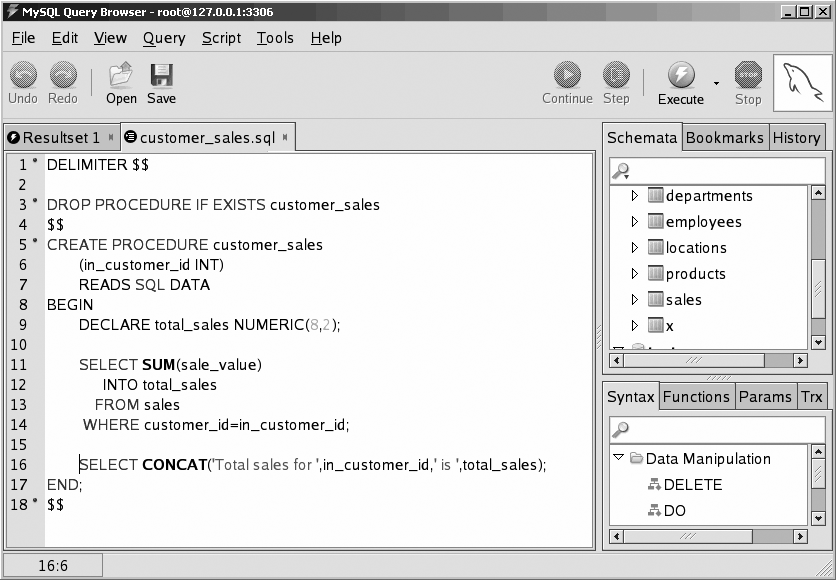Interacting with the Database
Most stored programs involve some kind of interaction with database tables. There are four main types of interactions:
Store the results of a SQL statement that returns a single row into local variables.
Create a “cursor” that allows the stored program to iterate through the rows returned by a SQL statement.
Execute a SQL statement, returning the result set(s) to the calling program.
Embed a SQL statement that does not return a result set, such as
INSERT,UPDATE,DELETE, etc.
The following sections look briefly at each type of interaction.
Tip
To run the examples in this section of the chapter, you should install the book’s sample database, available at this book’s web site (see the Preface for details).
SELECTing INTO Local Variables
Use the SELECT INTO syntax
when you are querying information from a single row of data (whether
retrieved from a single row, an aggregate of many rows, or a join of
multiple tables). In this case, you include an INTO clause “inside” the SELECT statement that tells MySQL where to
put the data retrieved by the query.
Figure 2-10 shows a stored procedure that obtains and then displays the total sales for the specified customer ID. Figure 2-6 executes the procedure.

mysql> CALL ...
Get MySQL Stored Procedure Programming now with the O’Reilly learning platform.
O’Reilly members experience books, live events, courses curated by job role, and more from O’Reilly and nearly 200 top publishers.

